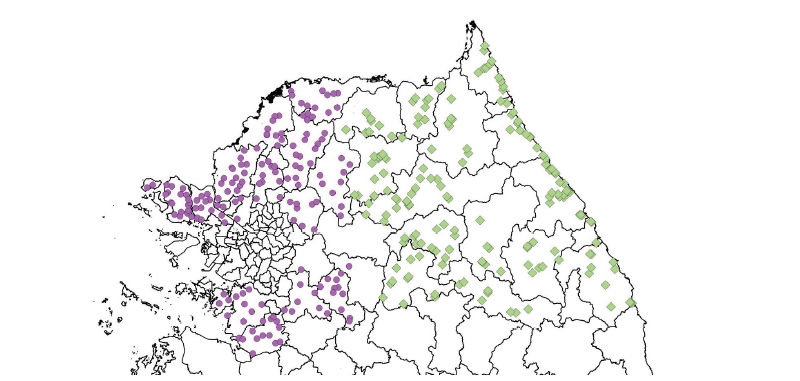Abstract
This study was conducted to investigate the geographic distribution of acetolactate synthase (ALS) inhibitor resistant paddy weeds in Gyeonggi and Gangwon provinces in Korea. Soils were collected from 397 field sites and then tested using soil assay method with treatment of imazosulfuron (75 g a.i. ha-1)+ pyriminobac-methyl (30 g a.i. ha-1). The proportion of sites confirmed with ALS inhibitor herbicide resistant (HR) weeds after soil assay was 77.3% and 75.3% in Gyeonggi and Gangwon provinces, respectively. Area of paddy fields infested with HR weeds was thus estimated 74,081 ha and 21,930 ha, respectively. In both provinces, the most dominant HR weed was Monochoria vaginalis (56.0%), followed by Echinochloa oryzicola (33.2%) and Shenoplectus juncoides (21.1%). In particular, HR Echinochloa species (E. oryzicola and E. crus-galli) were estimated to infest 42% of paddy fields in Gyeonggi and Gangwon provinces, suggesting that urgent countermeasure is required to tackle increasing HR Echinochloa species. Geographical information for HR weeds in Gyeonggi and Gangwon provinces will be useful to establish site-specific HR management strategy and countermeasure.
Figures & Tables

Fig. 1. Soil sampling sites in Gyeonggi (●) and Gangwon provinces (◆). Soil sampling was made in March of 2017.


